On a quiet Tuesday, as the digital world spun on, something unexpected began blooming on social media feeds. The brutalist lines, metallic curves, and futuristic silhouettes of 21st-century architecture began to soften and transform into hand-painted dreams. Modern icons like the Guggenheim, the Gherkin, and the Sydney Opera House were suddenly bathed in twilight pastels, covered in ivy, surrounded by fluttering spirits and whimsical clouds. It looked like Hayao Miyazaki (co-founder of Studio Ghibli) had become the creative director for the built world.
Welcome to the world of Ghibli Style Architecture, a viral visual movement spreading rapidly across platforms like X (formerly Twitter), Instagram, and Reddit. Architects, artists, and dreamers are using AI tools to reimagine modern architectural landmarks through the warm, soulful lens of Studio Ghibli, Japan’s beloved animation house behind Spirited Away, Howl’s Moving Castle, and My Neighbor Totoro.
At first glance, it’s fun. But look deeper, and the trend reflects a growing yearning to bring emotion, softness, and narrative back into the built environment. From concrete megastructures to glass-clad icons, modern landmarks have now turned into watercolor wonders, rich in character and mystery. Here are 15 modern landmarks recreated by Hamid Hassanzadeh using AI in collaboration with the Architectanddesign Instagram account:
Sydney Opera House – Jørn Utzon
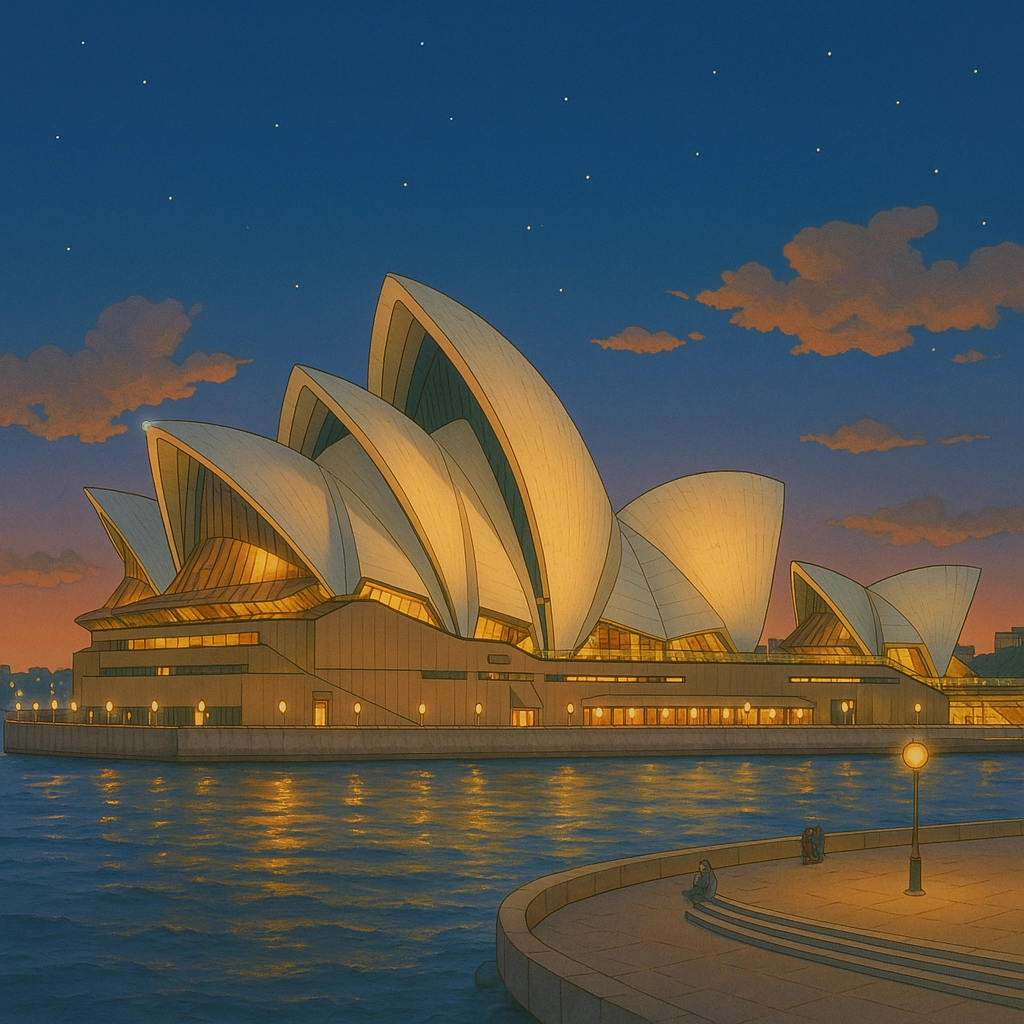
The iconic sails of the Sydney Opera House become even more organic in Ghibli form, appearing as giant sea shells that hum lullabies by the water. Moss creeps gently over its curves, and lanterns bob in the harbor, making it feel less like a performance venue and more like a resting place for sea spirits.
Heydar Aliyev Center – Zaha Hadid Architects
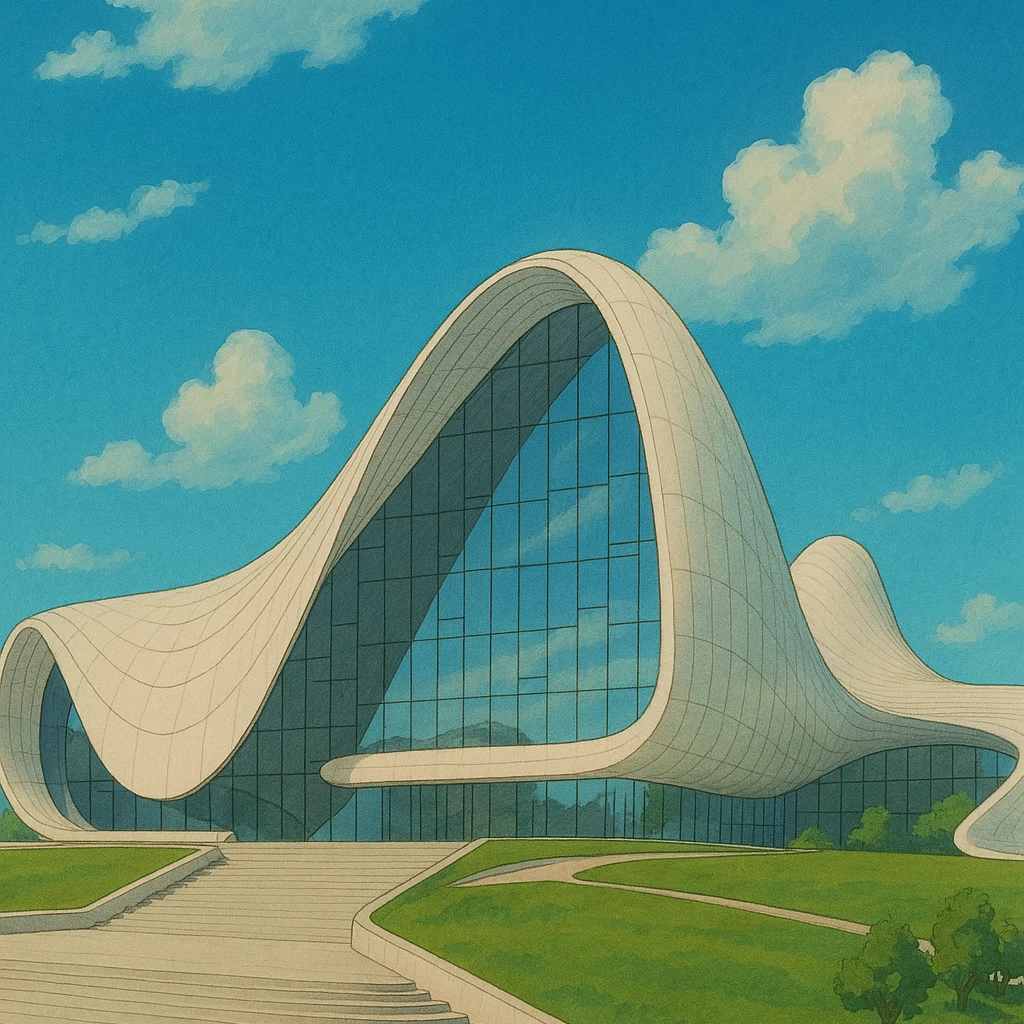
Zaha Hadid’s fluid masterpiece in Baku, known for its sweeping white waves, transforms into a creature of motion. Under the Ghibli aesthetic, the building looks alive, its curves more exaggerated, wrapped in cherry blossoms and glowing softly under a moonlit sky.
Guggenheim Museum, Bilbao – Frank Gehry

Frank Gehry’s metallic marvel in Bilbao becomes less armor, more dragon. Its titanium scales shimmer in sunset tones while tiny creatures peek from behind each curve, turning the building into a resting beast rather than a sharp-edged sculpture.
Habitat 67 – Moshe Safdie Architects
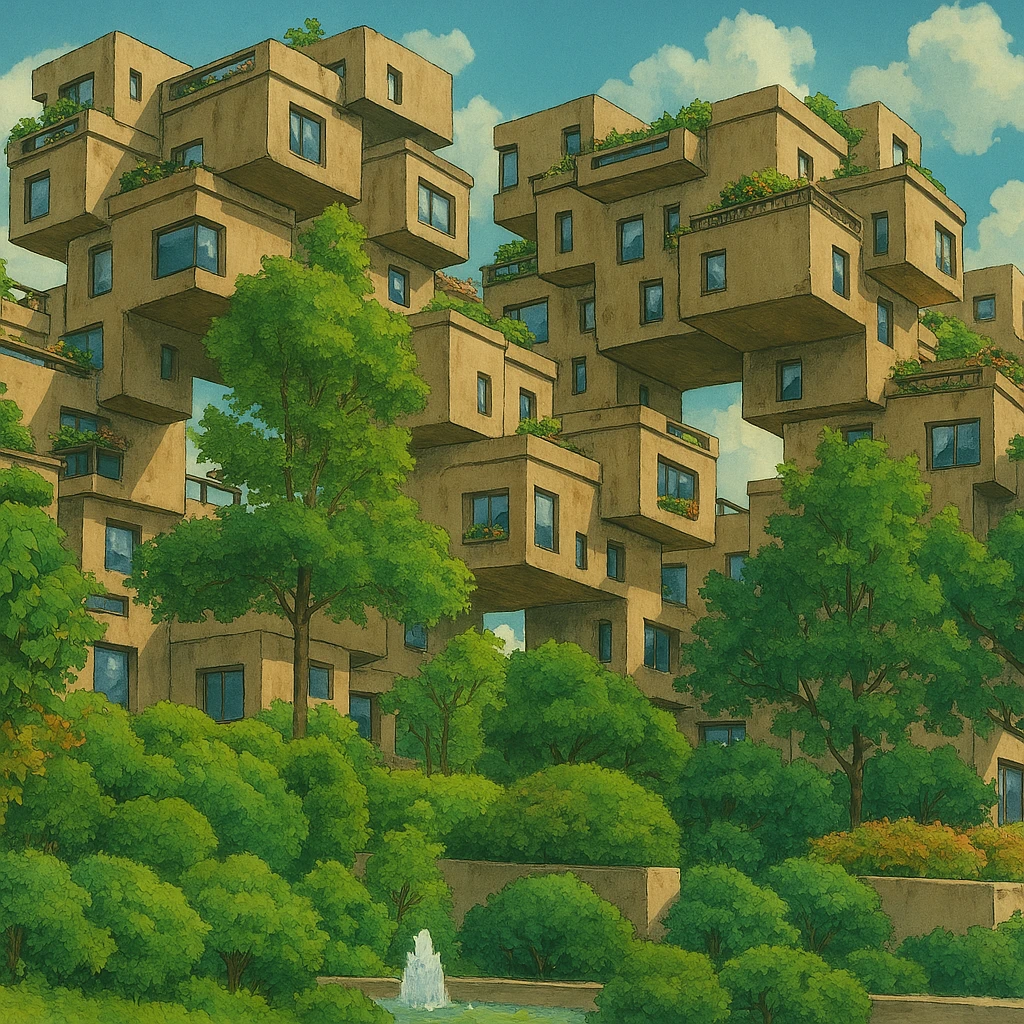
What once stood as a brutalist utopia in concrete now becomes a village of enchanted stone homes. Overgrown with ivy, trees sprouting from rooftops, and clotheslines fluttering with hand-washed laundry, this new version evokes the feel of a hillside community built by forest dwellers.
Museum of Contemporary Art – Oscar Niemeyer
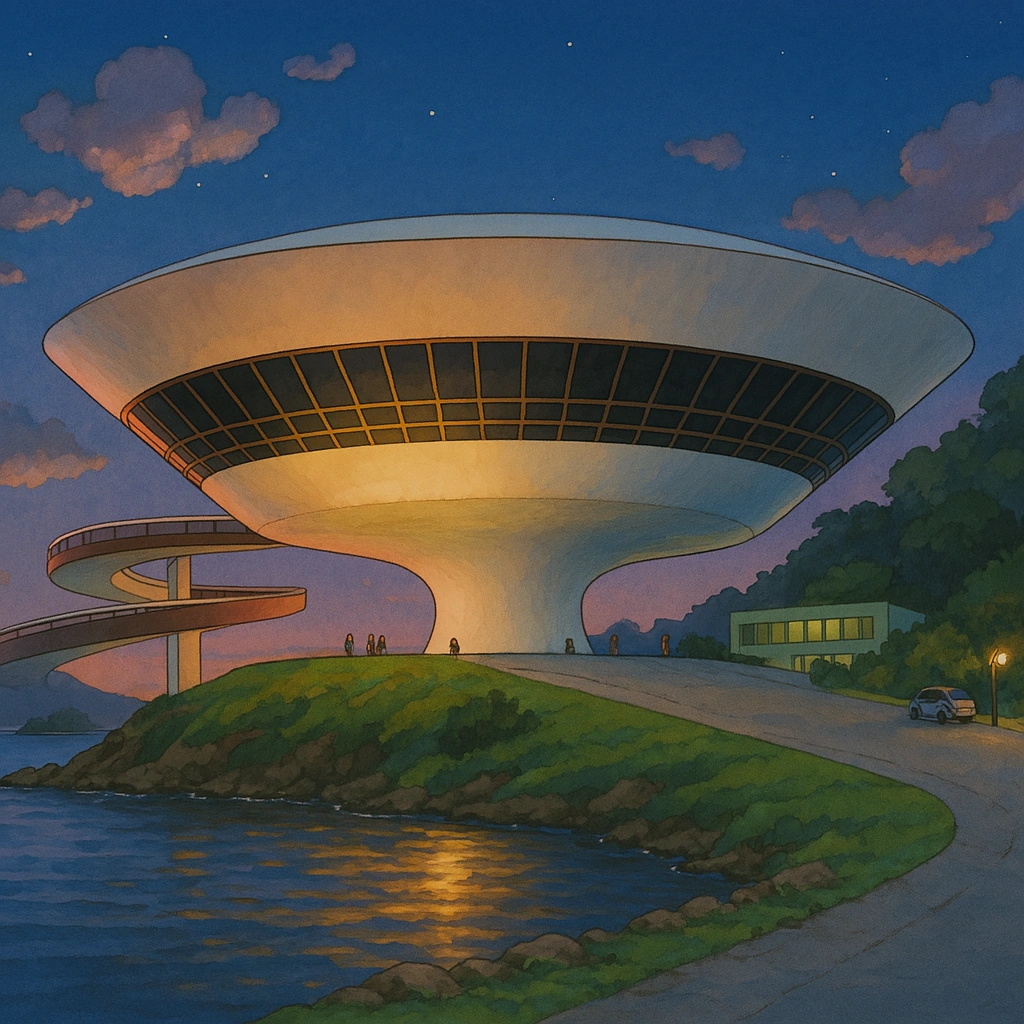
Oscar Niemeyer’s UFO-like structure in Niterói hovers just slightly above the mist in its Ghibli incarnation, as if it’s deciding whether to land or lift off. Seagulls swirl around it, and its stark geometry now feels delicate, a floating observatory for dream-watchers.
Harbin Opera House – MAD Architects
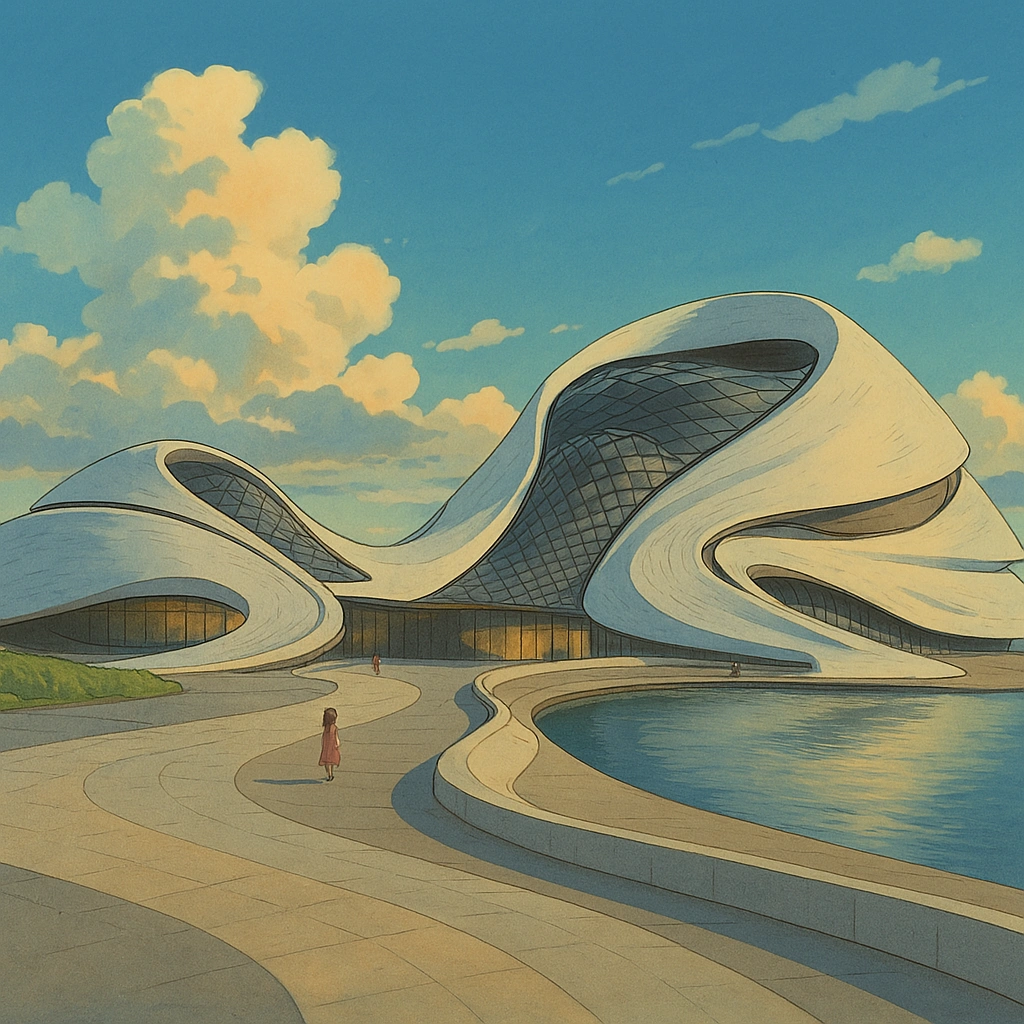
The icy curves of the Harbin Opera House, which blend seamlessly with the landscape, are softened further into glowing snow dunes. The surrounding land is blanketed in snow, and warm golden lights spill from the interior, offering refuge for mystical creatures wandering the wintry forest.
Guggenheim Museum, New York – Frank Lloyd Wright
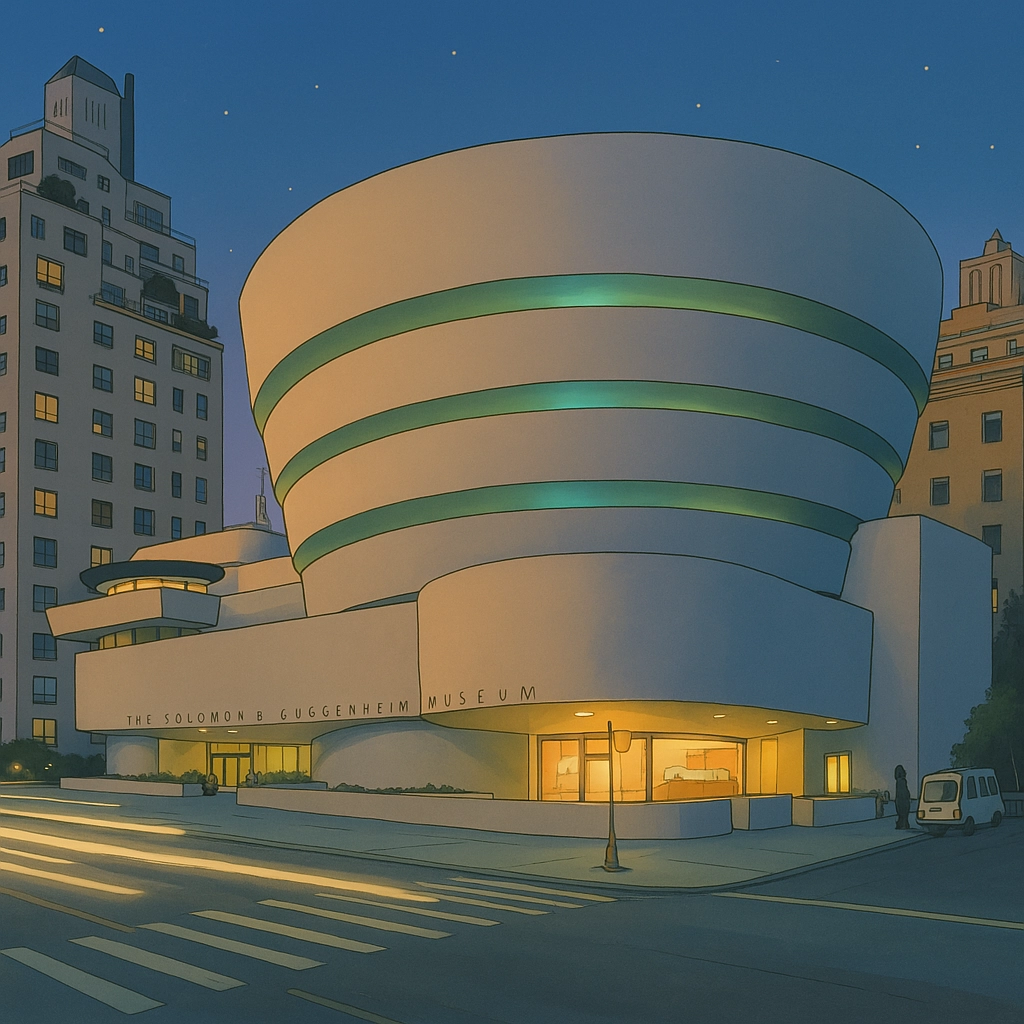
The spiral ramps of the Guggenheim curl like the inside of a nautilus shell, now built entirely of wood and moss. A great tree grows through its center atrium as if it has been reclaimed by nature or perhaps nurtured by it from the beginning.
Metropol Parasol – Jürgen Mayer
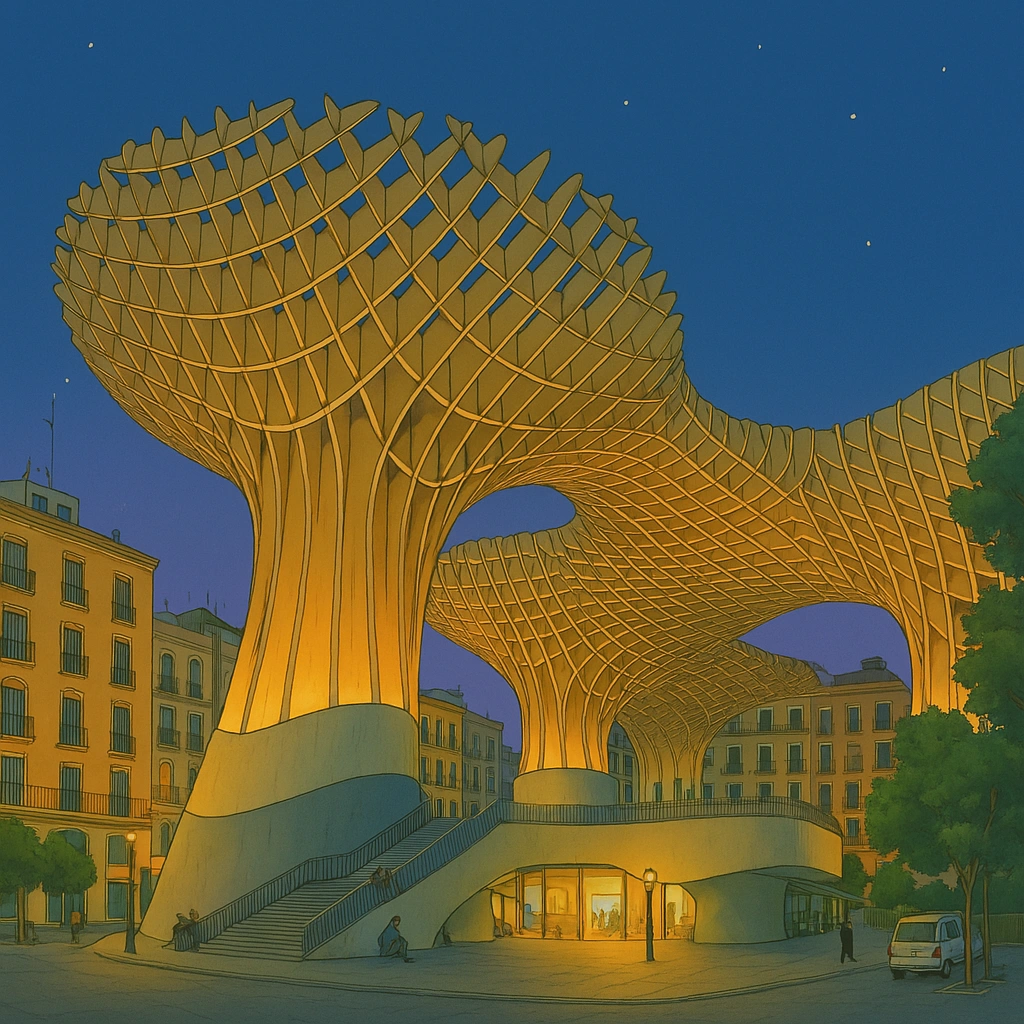
This sculptural urban canopy in Seville becomes a giant mushroom grove in the Ghibli universe. Children chase fireflies through the columns, and the structure breathes like a living organism, its wooden lattice speckled with flowers and fungi.
Azadi Tower – Hossein Amanat

Tehran’s historic symbol becomes a gateway to another realm. The monument’s sweeping arch is draped in woven fabrics and moss, while spirit birds circle above, hinting that it might open at any moment into another dimension.
National Museum of Qatar – Jean Nouvel

Already inspired by the geometry of desert roses, Jean Nouvel’s masterpiece becomes a sand-swept bloom in the heart of a storybook desert. Wind spirits dance through its petals, and each panel looks like it was painted in watercolor, faded by time and memory.
Elbphilharmonie Hamburg – Herzog & de Meuron
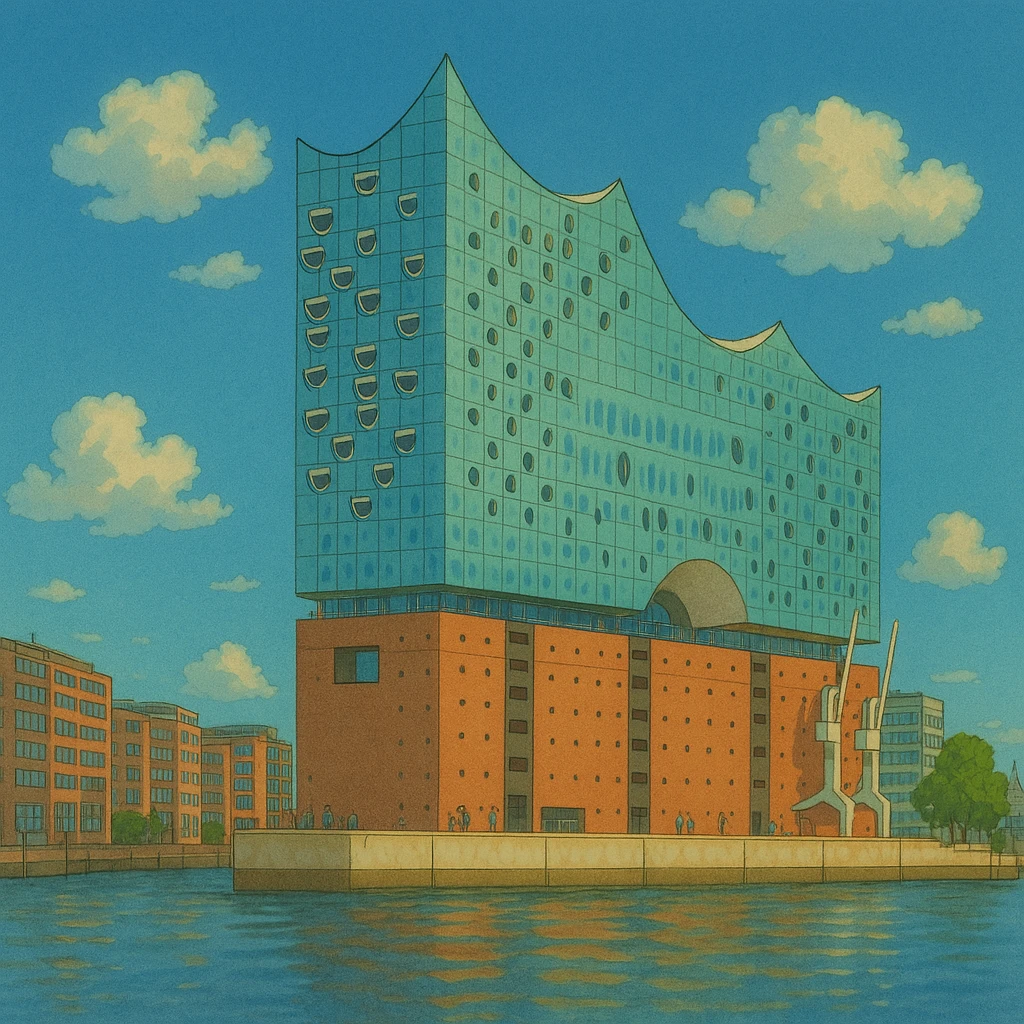
Perched on the edge of the Elbe River, this glass-topped concert hall becomes a glowing crystal fortress. Sea creatures leap in the waters below, and glowing jellyfish float along its curved roof, turning it into a palace for underwater spirits.
City of Arts and Sciences – Santiago Calatrava
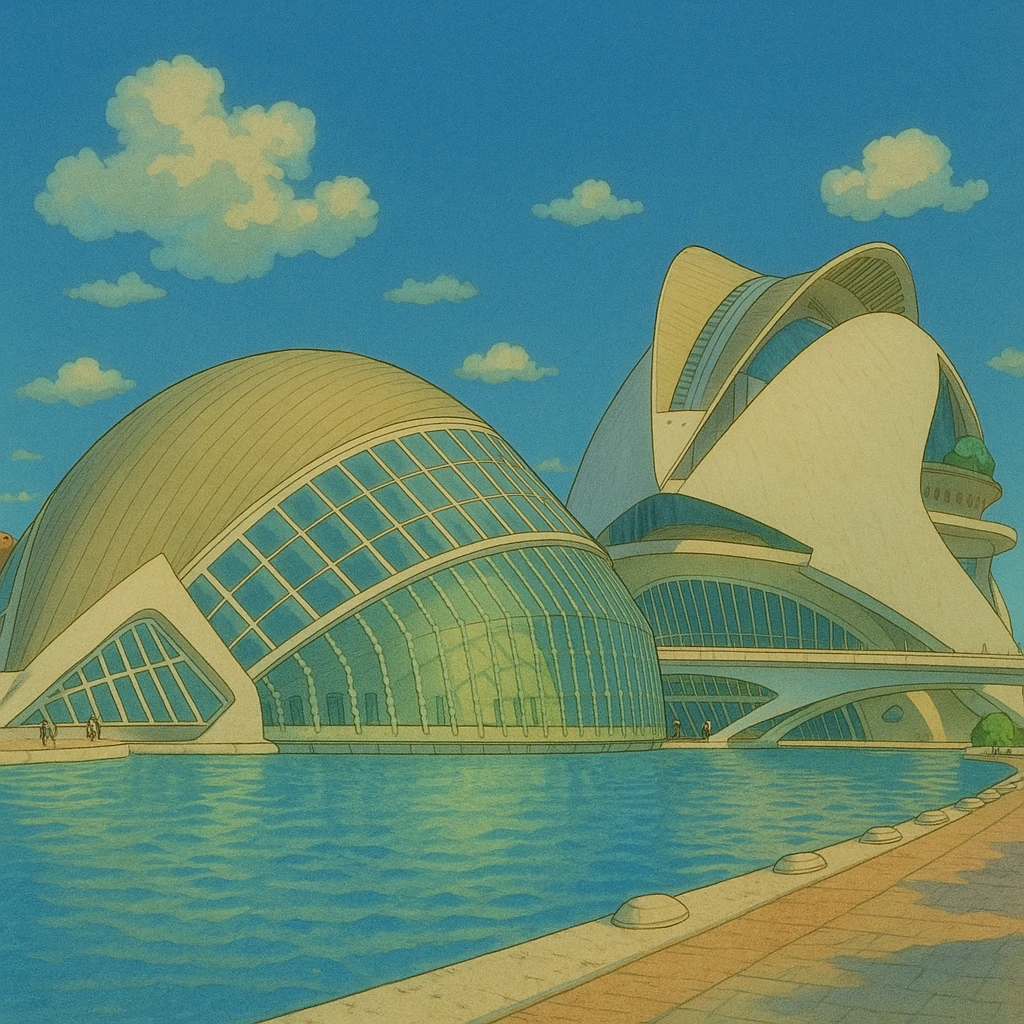
Calatrava’s futuristic campus in Valencia has become a temple of the sky. Its skeletal forms are softened, wrapped in flowering vines and blue feathers, with airships drifting overhead, a harmonious blend of technology and magic.
The Broad Museum – Diller Scofidio + Renfro
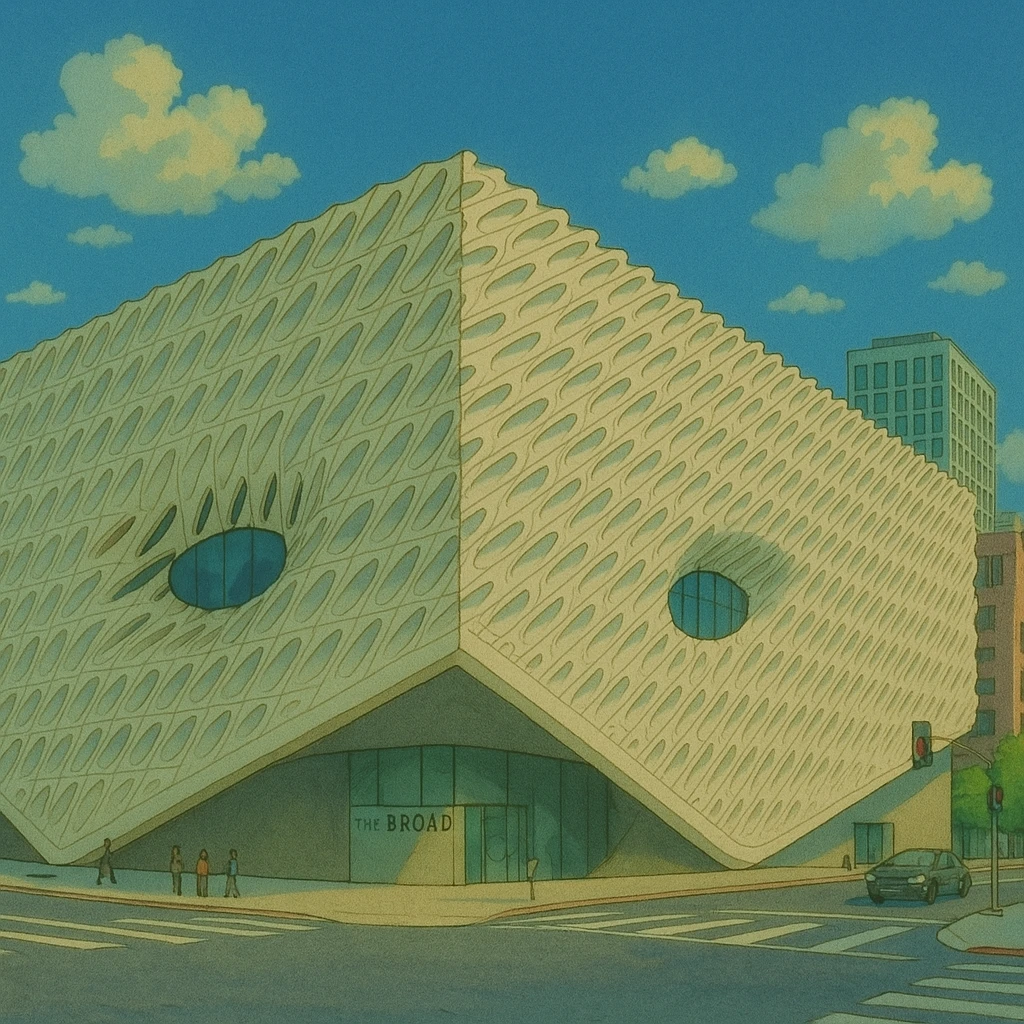
In Ghibli form, The Broad is less a “veil and vault” and more a glowing beehive, buzzing with tiny lights. The building pulses gently, as if breathing, each perforated opening revealing flickers of stories unfolding within.
Lotus Temple – Fariborz Sahba
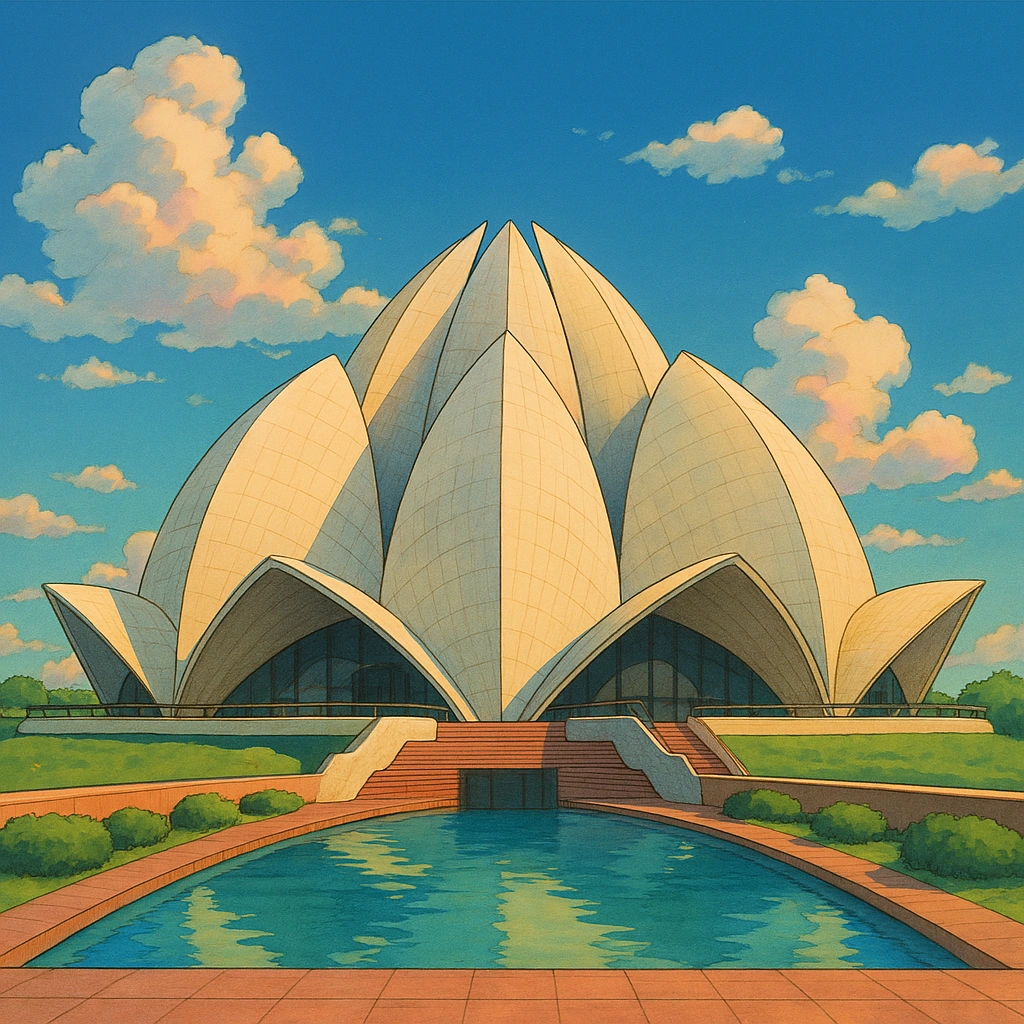
This architectural ode to unity becomes a sacred place of rest for woodland spirits. Its white petals now bear gentle age stains, and lily pads float lazily in its surrounding waters, welcoming pilgrims and wandering creatures alike.
The Gherkin – Foster + Partners
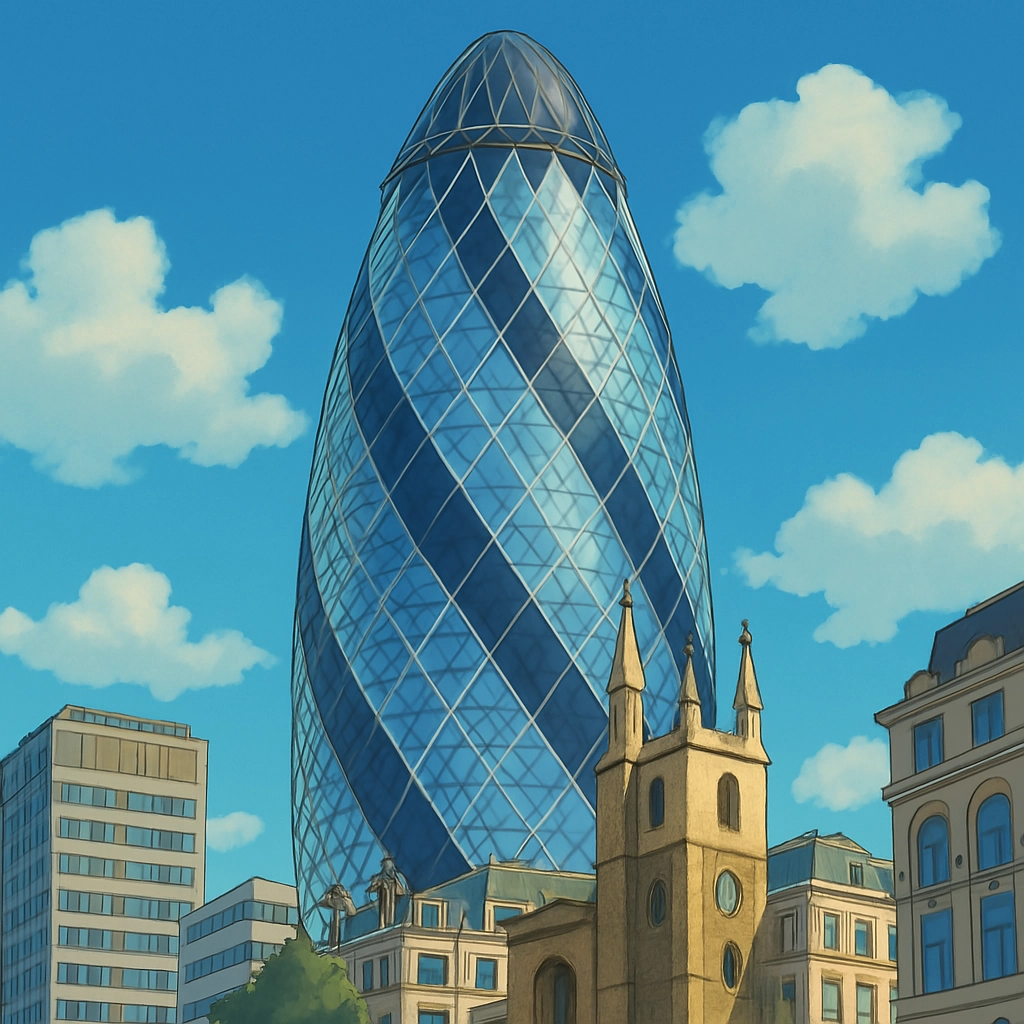
London’s infamous bullet-shaped skyscraper becomes a crystal nestled in a meadow. Covered in moss and surrounded by fog, it radiates a quiet magic, like a watchtower built to protect a forgotten kingdom.
What all these reinterpretations share is not just visual beauty but emotional resonance. In Studio Ghibli’s world, buildings are not just shelters or statements but characters. They breathe, decay gracefully, and hum with memories. This AI-driven trend captures that same spirit. A museum becomes a guardian. A tower, a friend. A concert hall, a sanctuary of dreams.
Some architects and designers point out that in a world increasingly dominated by hard lines and glass boxes, these Ghibli-style reinterpretations offer a gentler future, one where emotion is as essential as structure.
The trend also reflects a more profound desire, especially among younger generations, to reimagine urban spaces that prioritize wonder, not just efficiency. As AI tools like Midjourney, Krea, and DALL·E evolve, creatives can now explore alternate realities for the world around us, not for escape, but for inspiration.
Not everyone in the architecture community is thrilled. Some purists argue that turning serious work into fantasy undermines the principles behind the designs. But perhaps it’s less about critique and more about conversation. What does it say that millions of people are drawn to buildings once they’ve been softened, enchanted, and connected back to nature?
Maybe, in the age of climate anxiety and digital fatigue, these images whisper what we’ve forgotten: that architecture doesn’t have to intimidate. It can comfort. It can tell stories. It can dream.
And in this viral dreamscape, the city becomes a storybook, and every building is a page worth turning.

















Leave a comment